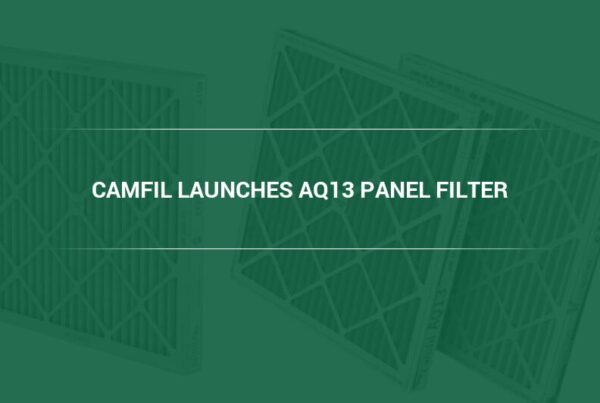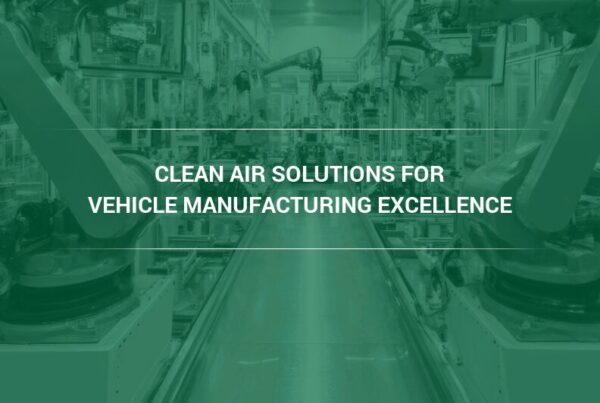Learn why air filters are being used to limit the presence of biological air pollutants inside buildings.
One of the main reasons buildings use air filters is to control the presence of biological contaminants in the air. According to the Environment Protection Agency (EPA), these biological contaminants include:
- Bacteria
- Viruses
- Animal dander
- Cat saliva
- House dust
- Pollen
- Mites
- Cockroach droppings
- Rat and mice urine
Controlling the presence of biological pollutants in indoor spaces is easier said than done because of the countless sources of these pollutants:
- Pollen comes from plants; people, animals, and pests carry viruses and bacteria.
- Animal dander and saliva come from household pets.
- Even urine from mice and rats can cause an allergic reaction in many people. When the urine dries, it leaves behind particles that can become airborne and then inhaled.
- When not properly maintained, dirty, heating, ventilation, and air conditioning (HVAC) systems can become breeding grounds for mold and mildew, which can circulate with the heated or cooled air in the rooms of a building or home
In other words, even if a building appears spotless, it can still have biological contaminants growing without the owner knowing. In fact, completely removing biological contaminants from indoor spaces is next to impossible. without However, installing high efficiency air filters or stand-alone room air purifiers is one way to significantly improve the air quality. Attacking the sources that generate these pollutants is an additional method that should also be undertaken.
“Biological contaminants usually come from biologic organisms like fungi, mold, mildew, animals, and humans,” notes Greg Herman, National Accounts Manager at Camfil USA. “So, unless a building is uninhabited or devoid of any furnishings, doors, and windows, it will always have airborne biological contaminants.”
As such, the challenge for home and building owners is to create an environment that discourages the presence of biological contaminants. For example, the EPA suggests the following measures:
- Keeping indoor humidity levels at 30 to 50 percent
- Removing standing water
- Cleaning up wet surfaces
- Addressing materials damaged by water
Anything damp and moist serves as a breeding ground for mildew, mold, bacteria, and even insects. In fact, dust mites, the bane of anyone suffering from allergies, love to grow in warm, damp environments.
What Are Biological Pollutants and How Do They Affect Indoor Air Quality?
Biological contaminants are living or dead organisms. They promote poor indoor air quality by causing a host of health issues such as asthma, allergy attacks and a host of respiratory and skin problems.
According to the American College of Allergy, Asthma and Immunology (ACAAI), allergies affect more than 28 million children, with 7.1 million suffering from asthma. Allergy symptoms such as sneezing, runny nose and headaches are also the second most common reason adults miss work.
Airborne biological contaminants can also wreak havoc on surfaces inside and outside buildings. Mold and mildew growth on plumbing, attics and basements can take thousands of dollars to repair; severe mold infestations also represent a serious health threat to the building’s occupants.
“Biological contaminants require two conditions to grow: nutrients and moisture,” said Herman. “Unfortunately, these conditions can be found in many locations, such as bathrooms, wet appliances like air conditioners and humidifiers, wet carpets, or flooded basements.” And don’t be fooled into thinking these conditions only exist in homes. Commercial office buildings, retail spaces and industrial facilities are all susceptible to conditions like these.”
Proper ventilation is one possible solution for preventing the buildup of moisture in indoor spaces, allowing damp air to escape and replacing it with air drawn through filters. However, ventilation can introduce another set of problems, especially if the building location is in an area with high outdoor pollution levels.
Where high efficiency air filters Come In
The challenge with ventilating facilities and buildings is that it becomes dangerous when the outside air brought inside contains high levels of pollutants like smoke, industrial runoff and carbon monoxide. This problem is where air filters with a high capture efficiency rating come in.
Many of the biological contaminants identified by the EPA are far too small to be seen by the naked eye. Capturing them requires better air filters than what are often installed in HVAC systems. ASHRAE Standard 52.2 indicates a MERV 13/13A filter will capture 90% of all particles 1 micron and larger and is a good starting point when upgrading air filters.
HEPA Filters in existing HVAC systems and Stand-Alone Air Purifiers
HEPA filters are a step up from MERV rated air filters. A true HEPA filter will remove 99.97% of particles down to as small as .3 microns. It’s possible to install these filters in some existing HVAC systems, but not all. A qualified air filtration professional near you will need to make that determination.
If the existing HVAC system is not capable of handling a HEPA filter, a stand-alone air purification system with a HEPA filter should be considered. Portable systems with HEPA filters have the advantage of being able to be placed in specific areas where contamination is highest or near the most likely points of entry into a building.
HEPA filters are especially important in medical facilities, where airborne contaminants may disrupt the health and well-being of patients. Poor indoor air quality and exposure to biological contaminants and dangerous chemicals can add to the list of risk factors that may cause patients to develop minor and potentially fatal illnesses.
Check out Camfil Megalam Energuard HEPA filter for the cleanrooms and life sciences industry.
Can Commercial HEPA Filters Remove Bacteria and Viruses?
Commercial HEPA filters have been used in biomedical applications since the 1940s to control the spread of airborne organisms like viruses and bacteria. Like most air filters, HEPA filters are rated based on their ability to capture a percentage of various particle sizes.
As mentioned earlier, true HEPA filtration has a 99.97 percent rate of efficiency when capturing particulate matter down to 0.3 microns in size. However, HEPA filters can be produced that capture an even higher percentage, up to 99.9995%.
The good news is that HEPA filters in properly maintained air filtration systems, have proven effective against bacteria, viruses and other microbiological contaminants.
Final Words on Industrial Air Purification Systems
Remember that while air filters can be effective at capturing airborne biological contaminants, an overall strategy includes having proper ventilation and removing the source of these pollutants if possible.
- In the case of mold and mildew growth, no amount of ventilation will fix a mold or mildew infestation if the root of the problem isn’t addressed.
- For pet dander, the best solution is to brush the pet’s hair outside.
- For allergens, it pays to stay away from known causes of allergic reactions.
For everything else, air filters should help reduce issues with biological pollutants. If you are interested in learning more about commercial air filters by Camfil USA, please click here. We can also guide you in deciding which filter to get based on your biological contaminant needs.
Lynne Laake
Camfil USA Air Filters
T: 888.599.6620
E:Lynne.Laake@camfil.com
F: Friend Camfil USA on Facebook
T: Follow Camfil USA on Twitter
Y: Watch Camfil Videos on YouTube
Sources:
- https://www.epa.gov/indoor-air-quality-iaq/biological-pollutants-impact-indoor-air-quality
- https://www.webmd.com/allergies/features/allergies-at-work#1



